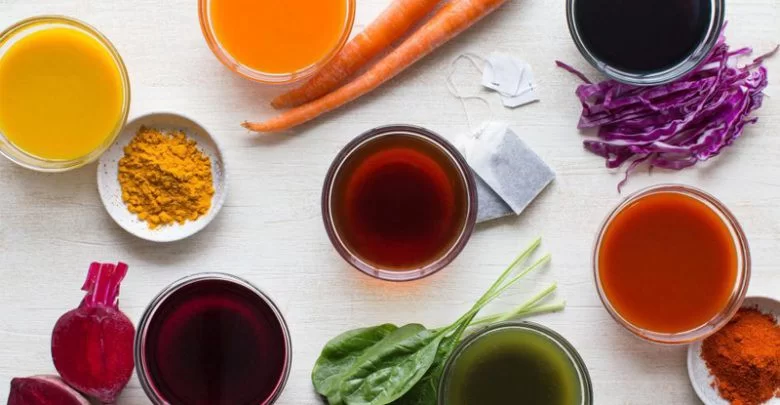
Table of Contents
ToggleIntroduction
In recent years, the demand for natural food color has grown rapidly across the food industry. More consumers are choosing products made with natural food colors instead of synthetic dyes due to rising health concerns and preference for clean-label ingredients. Natural food color is derived from sources like fruits, vegetables, and spices, making it a safer and more sustainable choice. With growing awareness, food manufacturers are shifting towards natural food colors to meet consumer expectations. This trend is not just a passing phase; it marks a long-term move towards healthier and more transparent food products.
What are Natural Food Colors?
Natural food colors are color additives derived from natural sources such as fruits, vegetables, plants, seeds, and even minerals. Unlike synthetic dyes, which are made from chemicals, natural food colors are extracted using safe and environmentally friendly methods. Common examples include beet juice for red, turmeric for yellow, spinach for green, and spirulina for blue. These colors not only enhance the visual appeal of food and beverages but also align with consumer demands for clean, healthy, and transparent ingredients. Because they come from real sources, natural food colors are often associated with added nutritional benefits and fewer allergic reactions
Why the Shift Towards Natural Food Colors?
- Consumer Demand for Clean Labels: Shoppers today prefer products with ingredients they recognize and trust. Natural food colors fit well with this clean-label trend, as they are derived from familiar sources like fruits and vegetables.
- Health Concerns Linked to Synthetic Dyes: Studies have raised concerns about synthetic food dyes being linked to allergies, hyperactivity in children, and other health issues. Natural food colors are viewed as safer and healthier options.
- Rise in Organic and Plant-Based Diets: As more people shift to organic, vegan, or plant-based lifestyles, there’s a greater demand for food products made with natural food colors instead of artificial additives.
- Regulatory Pressure and Bans: Many countries, especially in Europe, have strict regulations or bans on certain synthetic dyes. This has encouraged manufacturers to adopt natural food colors to comply with international food safety standards.
- Brand Image and Consumer Trust: Using natural food colors helps brands market their products as premium, health-focused, and transparent; which builds long-term trust with customers.
Which Industries are Embracing Natural Food Colors?
- Bakery and Confectionery: Cakes, candies, pastries, and icings often rely on vibrant colors for visual appeal. The bakery and confectionery industry is increasingly replacing synthetic dyes with natural food colors like beetroot red, turmeric yellow, and spirulina blue to meet clean-label expectations.
- Beverage Industry: Juices, flavored water, soft drinks, and health drinks are major users of natural food colors. Brands are using fruit and plant-based extracts to give beverages a fresh, healthy appearance that appeals to health-conscious consumers.
- Dairy and Ice Cream: Products like yogurt, flavored milk, cheese, and ice cream are using natural food colors such as annatto, carrot juice, and turmeric for shades of yellow and orange. This shift supports the industry’s focus on natural and additive-free dairy options.
- Snack Foods and Packaged Goods: From chips to ready-to-eat meals, packaged food brands are turning to natural food colors to maintain consumer trust. These colors help companies meet labeling regulations and attract label-reading customers.
- Nutraceuticals and Supplements: Health supplements, protein powders, and gummy vitamins use natural food colors to visually signal their wellness focus. Colorants derived from fruits and vegetables enhance the product’s health-friendly image.
- What are the Challenges in Using Natural Food Colors?
- Stability Problems: Natural food colors can degrade when exposed to heat, light, or changes in pH, making them less reliable during processing.
- Higher Production Cost: Extracting and processing natural ingredients is more expensive compared to manufacturing synthetic dyes.
- Limited Shade Options: The color range is narrower and less vibrant, which may limit their use in certain products.
- Color Inconsistency: Variations in crop quality or source can lead to inconsistent color results in the final product.
- Shorter Shelf Life: Natural food colors tend to spoil faster and may reduce the overall shelf life of food items.
Innovations in Natural Food Colour Extraction
Fermentation-Based Color Production: Scientists are using microbial fermentation to create stable, vibrant natural colors from sources like fungi and bacteria, reducing dependence on seasonal crops.
Micro-encapsulation Technology: This technique wraps natural food colors in a protective coating to improve their heat, light, and pH stability, extending shelf life and performance in processed foods.
Enzyme-Assisted Extraction: Enzymes are used to break down plant cell walls, allowing more efficient and eco-friendly extraction of color pigments from fruits and vegetables.
Supercritical Fluid Extraction (SFE): A clean and advanced method using carbon dioxide under pressure to extract pure, solvent-free colorants, ideal for high-quality natural food color applications.
Waste-to-Color Solutions: Companies are developing ways to extract natural food colors from food waste, like fruit peels and vegetable scraps, promoting sustainability and cost-efficiency.
The Future of Natural Food Colors
- Rising Demand for Clean-Label Products: Consumers will continue to prefer foods made with simple, recognizable, and natural ingredients, pushing brands to use natural food colors more widely.
- Growth in Plant-Based and Organic Markets: As plant-based diets grow in popularity, natural food colors will become essential to meet labeling and health-conscious expectations.
- Advancements in Biotechnology: Ongoing research will help create more stable, vibrant, and cost-effective natural food colors through fermentation and gene-editing methods.
- Eco-Friendly Sourcing from Food Waste: Extracting natural colors from fruit peels, vegetable scraps, and other food waste will support sustainability and cost reduction.
- Stricter Global Regulations on Synthetic Dyes: Governments are expected to tighten rules on artificial additives, encouraging a global shift toward natural food color use.
What are the Benefits of Natural Food Color?
Natural food colors offer many advantages that go beyond just making food look good. Here’s why more people and companies are choosing them:
- Better for Health: Natural food colors come from things like fruits and vegetables, so they don’t have harmful chemicals. This makes them a safer choice, especially for kids and people with allergies.
- Clean and Simple Labels: When food products use natural colors, it’s easier for consumers to recognize and trust the ingredients. This clean-label approach builds customer confidence.
- Good for the Environment: Since natural food colors are made from plants and other natural sources, they’re more eco-friendly and support sustainable farming.
- Follows Food Safety Rules: Many countries are strict about artificial colors. Natural food colors help companies follow those rules and avoid bans or warning labels.
- Added Health Benefits: Some natural food colors also have nutrients. For example, turmeric has anti-inflammatory properties, and beetroot is rich in antioxidants.
Conclusion
The shift towards natural food colors is redefining the future of the food industry. With increasing consumer demand for clean labels, health-focused ingredients, and sustainable practices, manufacturers are rapidly adopting plant-based and eco-friendly color solutions. Despite some challenges, innovations in extraction and biotechnology are making natural food colors more accessible and reliable. As the trend continues to rise, these colorants will play a vital role in creating safe, appealing, and transparent food products worldwide
FAQs
- What are the main sources of natural food colors?
- Natural food colors are typically derived from fruits, vegetables, spices, plants, and minerals—for example, beetroot, turmeric, spinach, and spirulina.
- Why are natural food colors replacing synthetic dyes?
- Due to health concerns and regulatory restrictions on artificial additives, natural food colors are being favored for their safety, clean-label appeal, and environmental benefits.
- When did the demand for natural food colors start to rise?
- The demand began increasing significantly over the past decade, aligning with the global movement toward organic, plant-based, and transparent food choices.
- Who is driving the shift toward natural food colors?
- Health-conscious consumers, regulatory bodies, and clean-label advocates are the key forces encouraging food companies to replace synthetic dyes with natural alternatives.
- How are natural food colors used in the food industry?
- They are used to color a wide range of products like beverages, bakery items, dairy, snacks, and supplements, enhancing both appearance and consumer appeal.


